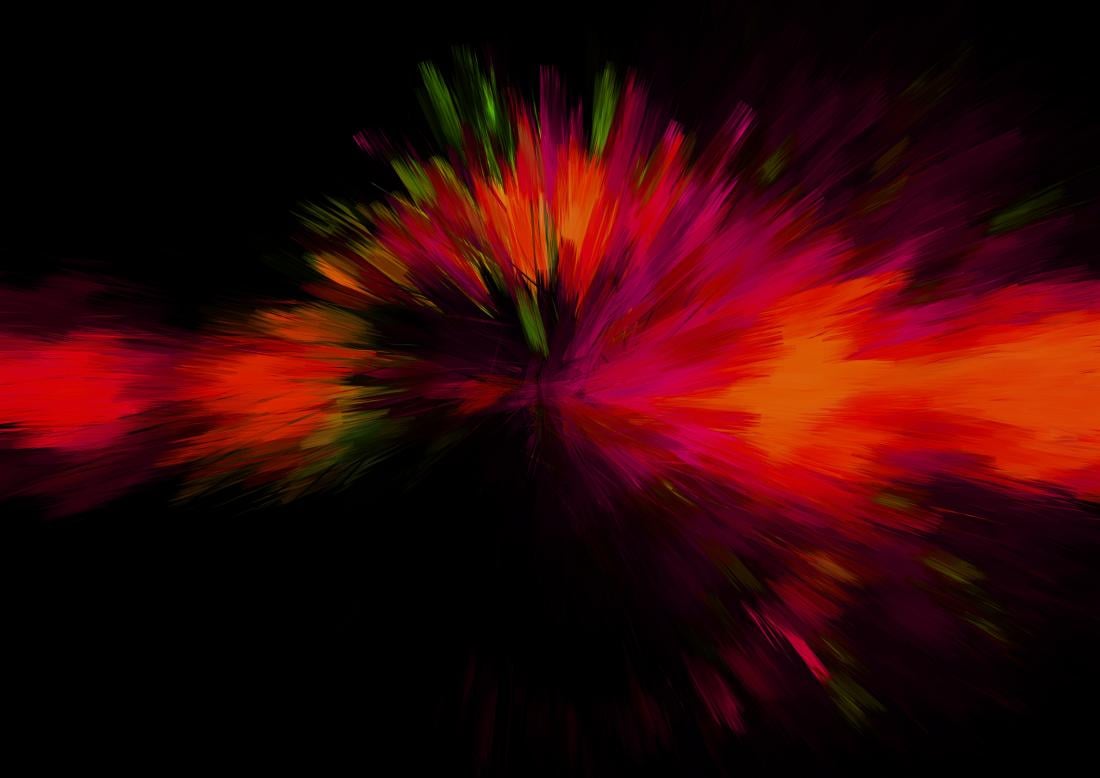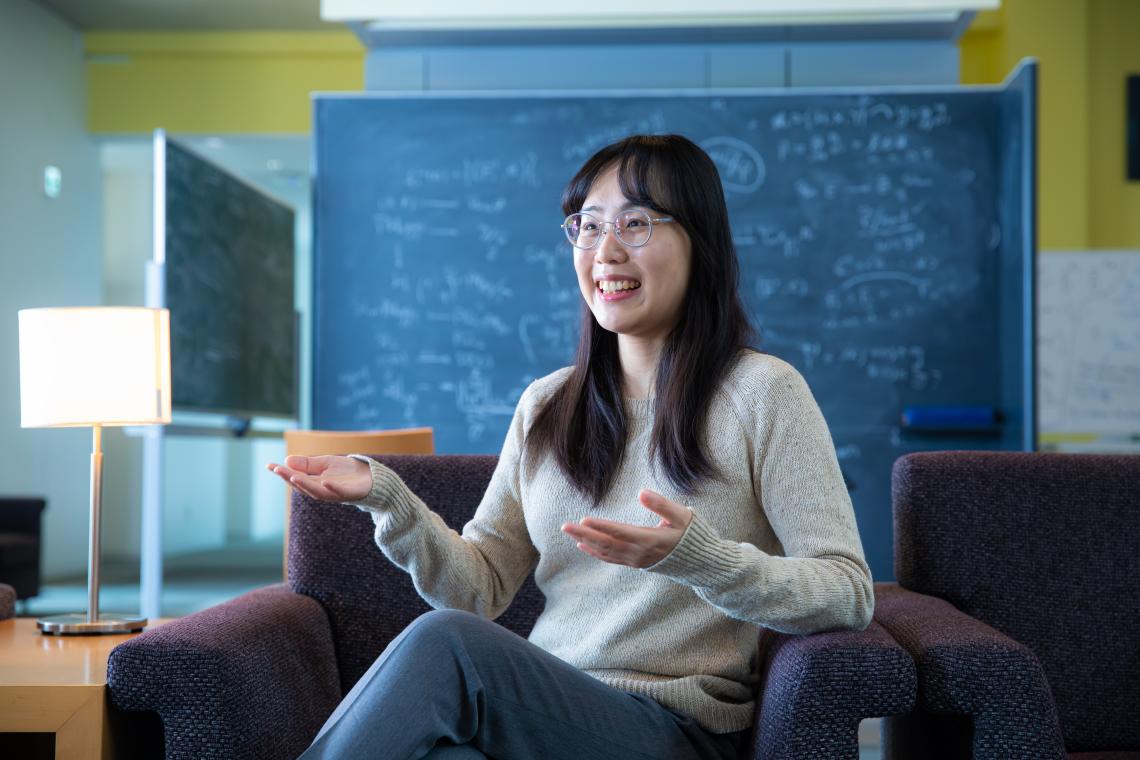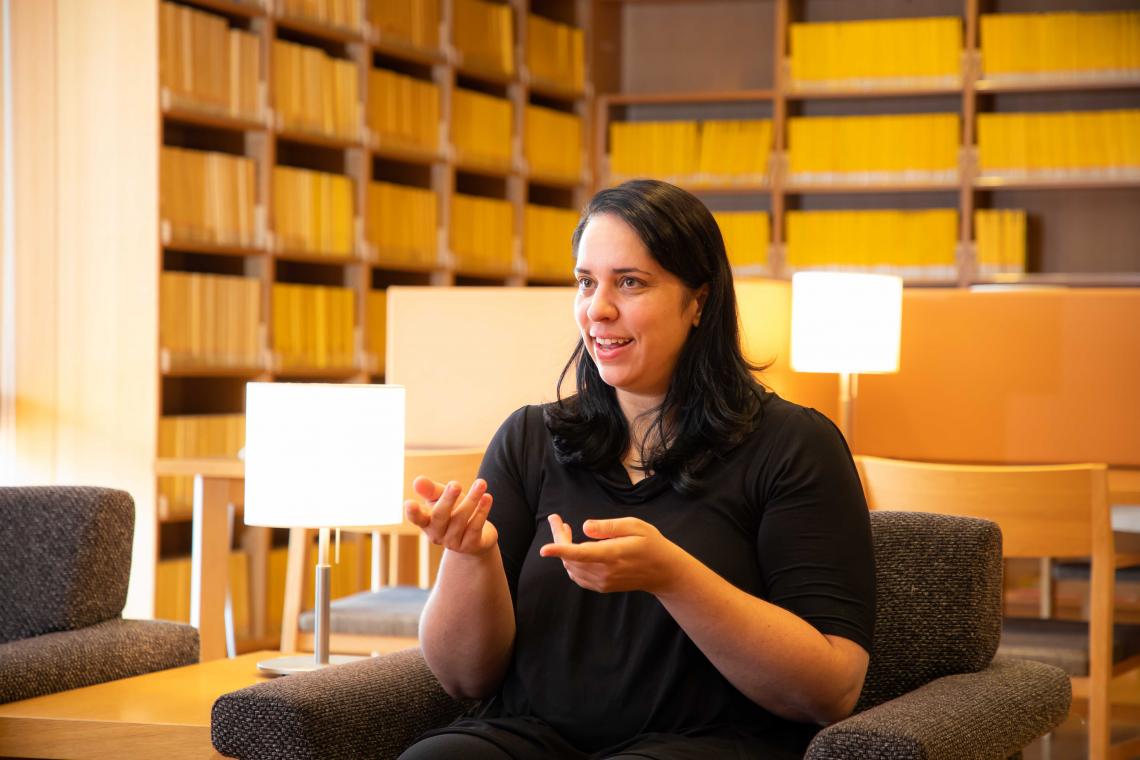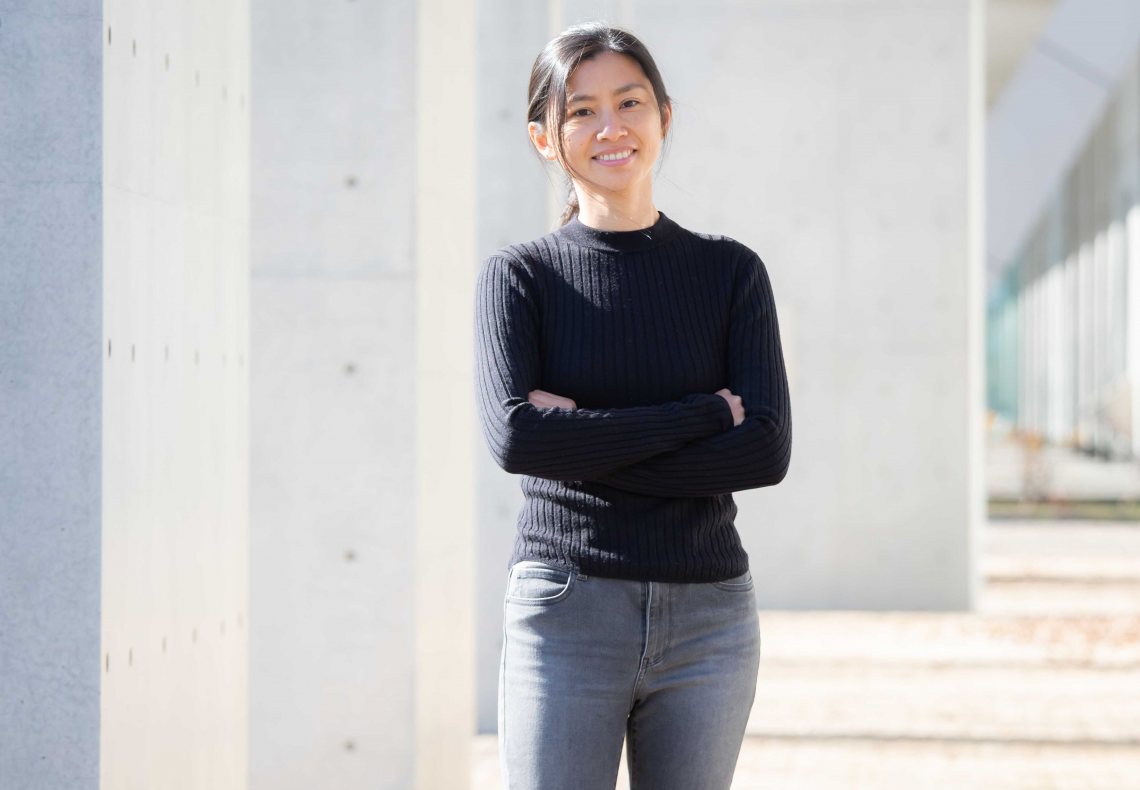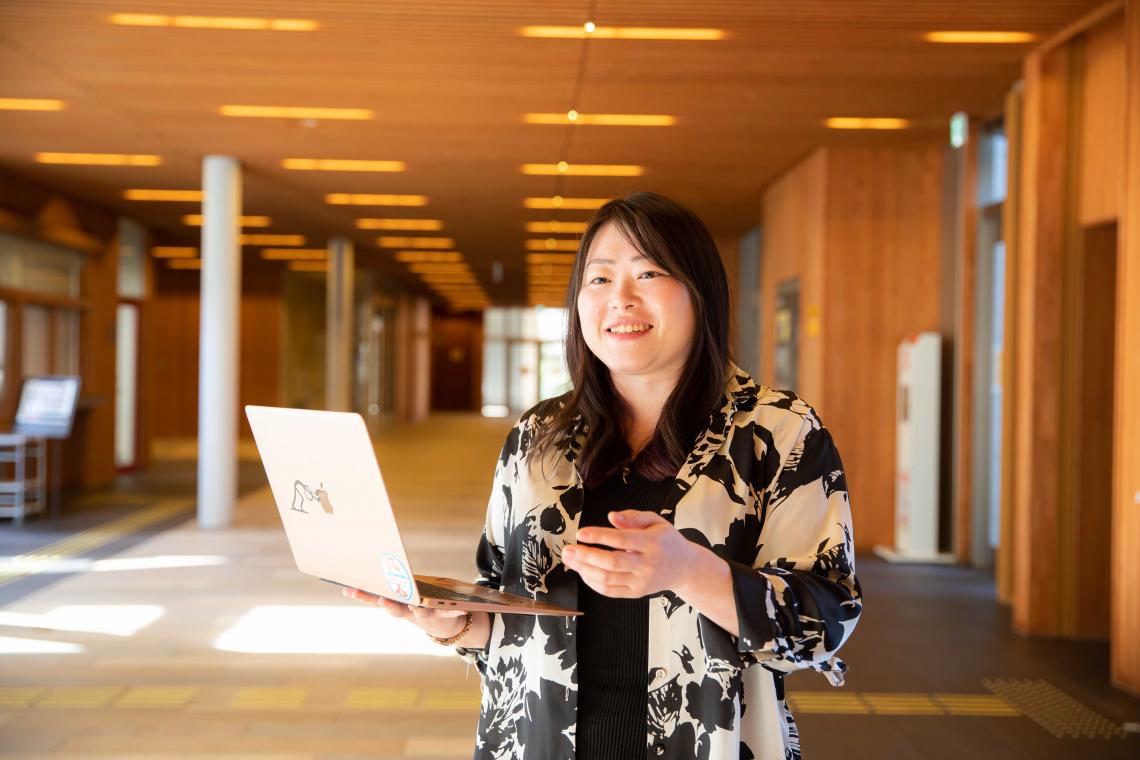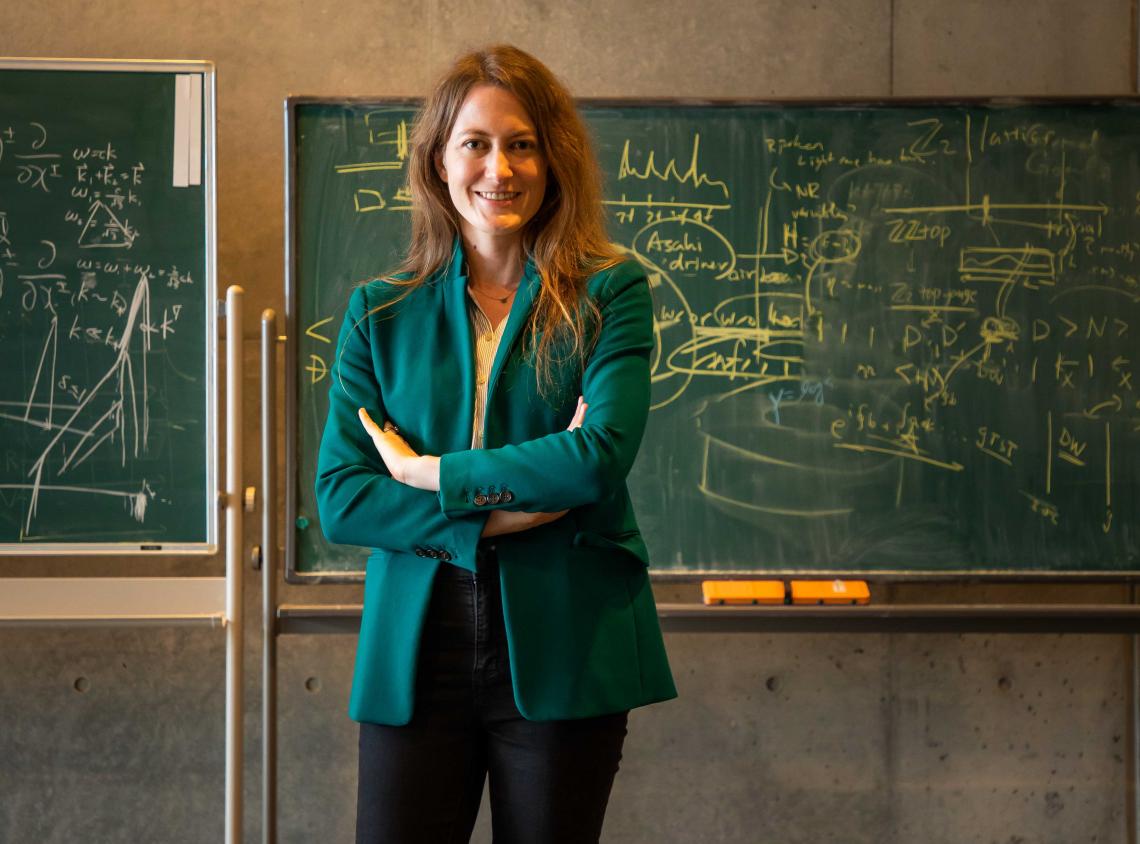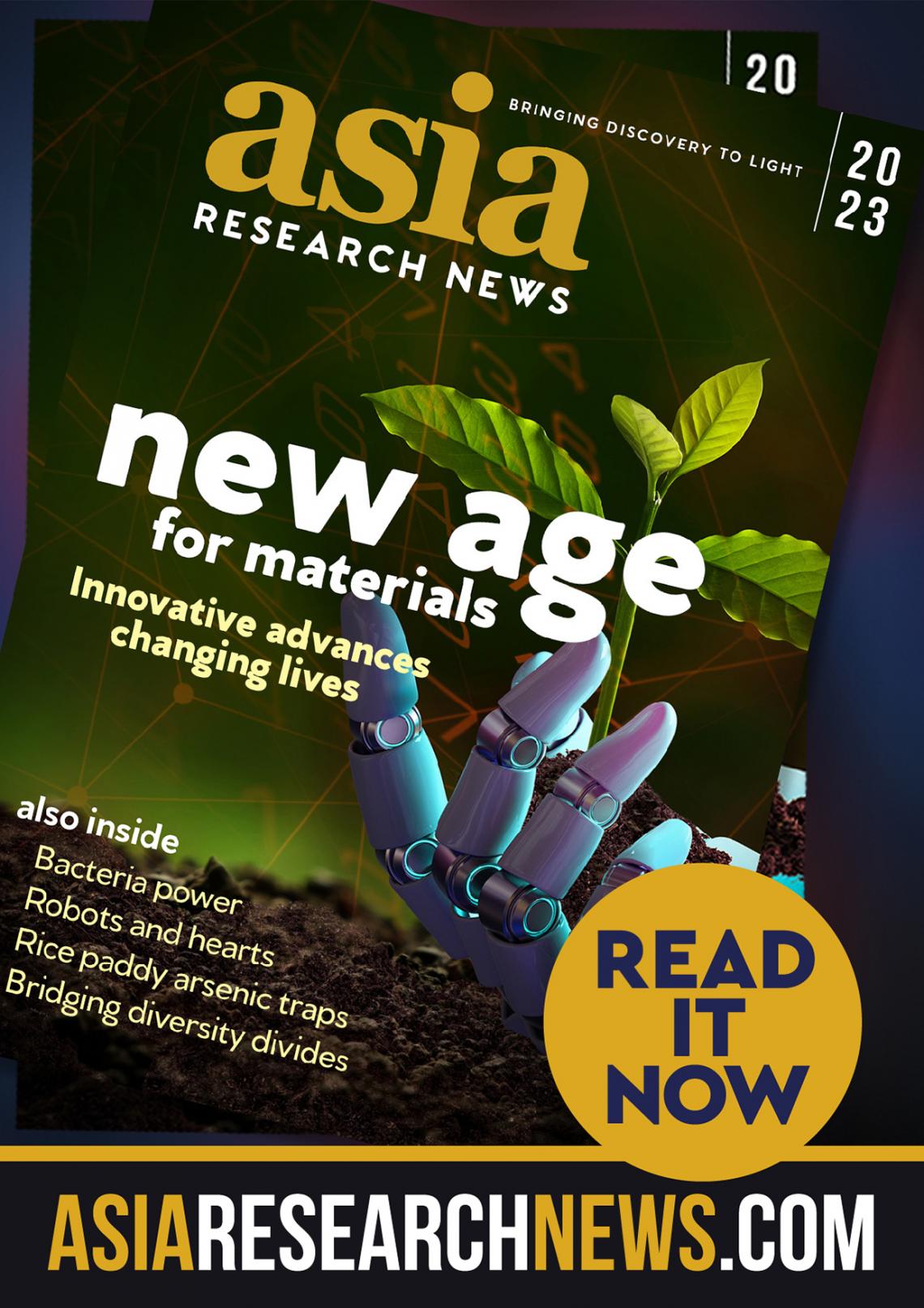This story is featured in the Asia Research News 2023 magazine. If you would like to receive regular research news, join our growing community. この記事の和訳は こちら。
Get the news in your inbox
Around the world, women are underrepresented in science, technology, engineering and mathematics.
In Japan, women rank below the Organisation for Economic Co-operation and Development (OECD) average. In first-year university classes before the pandemic, only 16% of physics students and 20% of mathematics students were women. (Source)
It is thought that the low rates of women who go on to study these subjects is a result of the country's low level of gender equality, a stereotypical image by society that physics and mathematics are masculine subjects, and parents preferring daughters to not pursue advanced education.
But the 15-year-old Kavli Institute for the Physics and Mathematics of the Universe (Kavli IPMU) is doing things differently. The official language at the institute is English, and half of its researchers come from abroad. Now, the institute’s aim is to ensure a more diverse research culture.
Asia Research News met five female researchers to learn about their research, what drew them to Kavli IPMU, and their experiences there. These women, from diverse backgrounds, excel in their fields and show what can be achieved when women are not held back.
Man Wai Cheung: The interplay of maths with geometry
Elisa Ferreira: The Universe over time
Jia Liu: Simulating mini universes
Miho Katsuragawa: Looking out and then in
Emily Nardoni: Interacting quantum ripples
Man Wai Cheung: The interplay of maths with geometry
Mathematician Man Wai Cheung is the institute’s first Chien-Shiung Wu Prize Postdoctoral Fellow, named in honour of the Chinese-American mathematician who made significant contributions to nuclear and particle physics. The fellowship covers three years with a research fund and annual salary, as well as other benefits, including support for fellows and their families to move to Japan.
Cheung's own research lies in the interplay between algebraic geometry, combinatorics and representation theory. Her main goal is to attain the mirror symmetries for cluster varieties. Mirror symmetry is motivated from mathematical physics to study dualities between geometries, the symmetry where information from one space can be obtained from another. Cluster varieties are spaces originated from algebras. Cheung is exploring the underlying link between these two subjects.
She obtained her undergraduate and master's degrees in her native Hong Kong and moved to the University of California, San Diego and Harvard for her PhD and postdocs. Working with other mathematical physicists and data researchers, she is also using data science to help solve these mathematical structures. This access to other researchers at Kavli and across Japan was part of the appeal of moving here.
Cheung has a side project in the new Center for Data Driven Discovery, to try to infuse data science into the structures she works on. “It isn’t really my expertise, but the cluster varieties I study carry a lot of combinatorial structures, which is an area where mathematicians and physicists can work together to try to understand the significant properties of the structures,” she says.
Although she has only been at Kavli for a short time, she already finds that the institute has a positive culture: “Senior faculty are very supportive and encouraging. They are distinguished and world class in their fields, and it’s an honour to
work with them.”
Elisa Ferreira: The Universe over time
Brazilian cosmologist Elisa Ferreira always knew she wanted to be a scientist, though she felt as a woman that she was encouraged into biology more than physics. In her last year of high school, a teacher suggested maths and physics and, realising she loved these subjects, changed her major while standing in line to hand in her form.
Ferreira studies the origins of dark matter and dark energy. She is developing new models and testing them by using astrophysical and cosmological observations to try to discover the nature of these mysterious entities, the hidden 95% of the Universe. She also looks at the Universe from immediately after the Big Bang, to understand its beginning and evolution and how our Universe looked like in its first moments, in order to explain what we observe at recent times.
Her passion for cosmology is borne not only from a fascination about the Universe but also because cosmology is a subject that bridges a range of different areas of physics. As she puts it: “where everything meets everything.”
Ferreira enjoys the interdisciplinary and collaborative environment at Kavli IPMU. This is not only an important aspect for all researchers, but it is also built into the architecture of the building and the ethos of the institute. The large sharing tables in the canteen and corridors that wind around the central piazza encourage interaction.
In her opinion, we should fight against stereotypes in the world of science as they are very damaging to young girls and minorities who are interested in science. She believes the stereotype of the sole genius scientist is inaccurate. “Science is collaborative. It is a collective endeavour. It is at the heart of successful research.”
“I gain a lot as an individual but also for my research by talking to people and having others with different expertise in the same environment. That is the greatest thing you can have in research. Kavli IPMU has leading researchers from different research fields and a culture that invites collaboration. These are the main reasons why I chose Kavli IPMU.”
Jia Liu: Simulating mini universes
Jia Liu’s route to cosmology was not straightforward. She obtained a BA in business management and an MA in human resources management in the US. Originally from China, her parents encouraged independence and exploration. Liu read about astronomy and quantum mechanics in her spare time while working for a consulting company analysing compensation data. Eventually, she realised this was where she wanted to place her full attention.
At Kavli IPMU, her research focuses on understanding fundamental parameters of the Universe, such as dark energy and dark matter, as well as tiny particles like neutrinos.
“We run simulations to understand the Universe at its beginning and how it evolved to where it is today, using many hundreds of mini universes with different initial conditions – some with more dark energy, others with more dark matter, and some with active neutrino particles,” explains Liu. “We compare the final simulated universes to identify ones that are most similar to ours, and in this way we hope to understand how things began.”
Faced with many offers, Liu chose to work at Kavli IPMU based on the advice of a supervisor who told her to pick the place she wanted to live and the people she wanted to dine with. As well as the new city and the friendly staff at Kavli IPMU, Liu has access to cosmic microwave background and galaxy surveys, which are often conducted separately. To her, this is the crux of the Kavli IPMU appeal: the collaboration, the meeting of disciplines, and the well-resourced community.
Liu has recently taken on the role of director of the new Center for Data-Driven Discovery, where she is implementing new data science techniques, such as machine learning. The work should help researchers extract more information from the same data.
Liu finds the use of machine learning to probe the fundamental parameters underpinning the workings of the Universe extremely satisfying. “I’ve been in this job for a year. Being asked to lead the center and to work across many disciplines with colleagues from across and beyond the institute is a true privilege. Kavli is really a good place to be a researcher at the intersection of so many positive things.”
Miho Katsuragawa: Looking out and then in
Miho Katsuragawa has recently shifted her focus from astrophysics to nuclear medicine, using X-ray and gamma ray detectors to look into a body.
Her PhD research at Kavli IPMU focused on the observational study of supernova remnants: what is left over after the explosion of a massive star. Studying these X-rays makes it possible to observe star evolution over long periods of time.
Now she is developing X- and gamma-ray detectors for medical purposes using semiconducting devices. She explains that she uses the same equipment she used in her previous research to observe objects at a significantly smaller signal.
“We use the same device, which has high energy resolution, but the optical side is different. In medical imaging we want to see tremendously small things up close. We need to improve the imaging system, so we are collaborating with medical doctors. As physicists, we can develop the equipment and lead the experiments, but we need the medical researchers to understand the resulting images.”
It is possibly because of the open and collaborative approach at the institute that Katsuragawa began to see that the devices she uses have applications in other fields, such as imaging, detection and nuclear medicine. She is now exploring other ways that they can be used in these areas.
Emily Nardoni: Interacting quantum ripples
Emily Nardoni, a theoretical physicist originally from Los Angeles, California, also had a high school “aha!” moment when she realised that physics asks fundamental questions about the Universe and how it works. She grew up in Burbank, Los Angeles, USA, the movie studios town, surrounded by people who wanted to get into film. Despite choosing a different route, she had supportive teachers and forged her own path.
Her days are spent developing a deeper understanding of quantum field theory, the language of particle physics that describes all the elementary particles and forces as fluctuations of elementary quantum fields. She is focused particularly on where the ripples between various quantum fields are strongly interacting.
Nardoni finds Kavli IPMU a unique place that attracts international researchers from diverse fields. There is a vast amount of physics taking place in a dynamic and collaborative way, and one of its main strengths is its travel and visiting programme, which encourages researcher exchange visits.
“I can lead my own research programme, which I really like, especially at this stage in my career. Being encouraged to be independent and take the lead is pretty cool.”
But above all, Nardoni highlights, “the focus on in-person interaction, collaboration and discussion is prioritised. They have chalkboards all over the building. So if I'm in some random hallway having a discussion with someone and we have an idea that we want to write down, we can go to a chalkboard two steps away.”
Further information
Motoko Kakubayashi
[email protected]
Kavli Institute for the Physics and Mathematics of the Universe
The University of Tokyo
We welcome you to reproduce articles in Asia Research News 2023 provided appropriate credit is given to Asia Research News and the research institutions featured.


